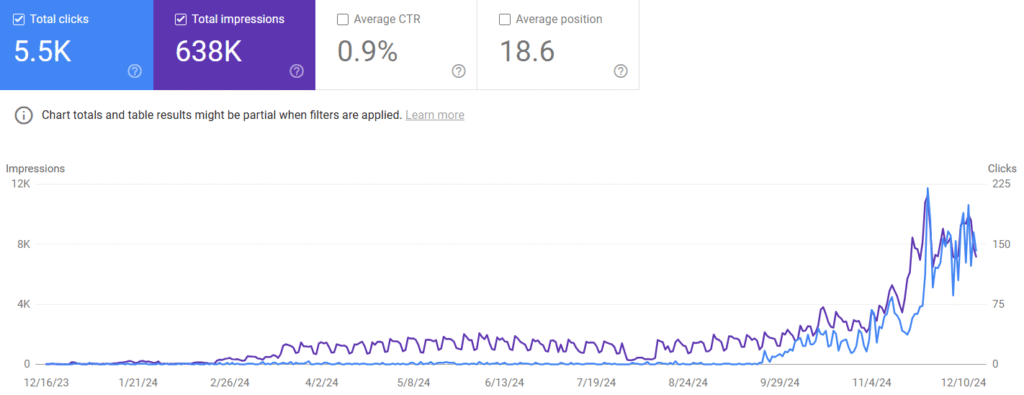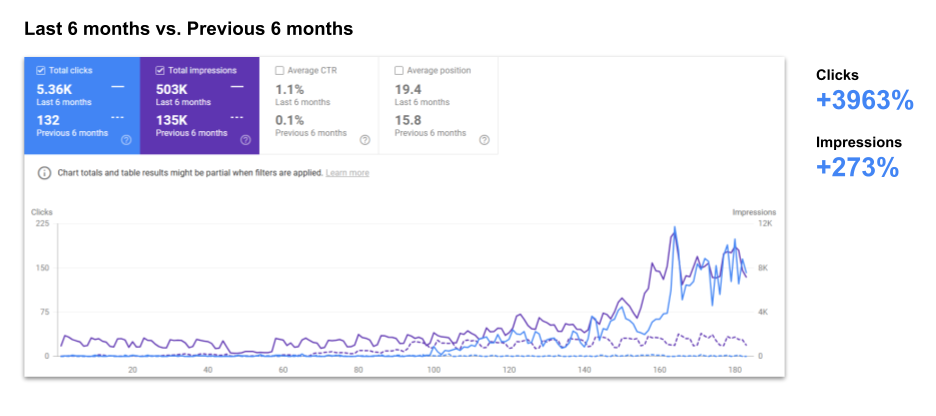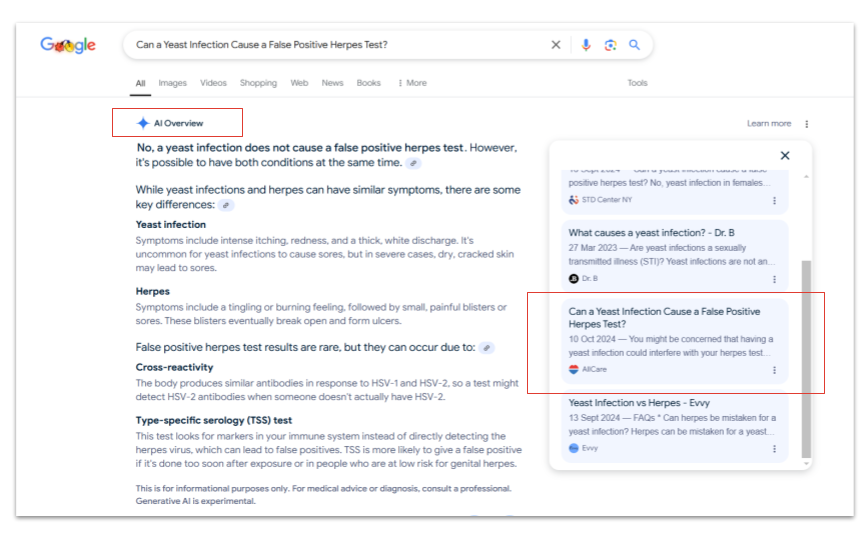Updating your website for SEO in 2025 is no longer just about plugging in keywords and checking boxes. The days of ranking with a few on-page tweaks are over. While foundational tactics like keyword research and technical optimization remain essential, they’re now just table stakes—you’d be hard-pressed to find any healthcare organization that isn’t using them.
Table of Contents
Standing out in 2025 requires doing more, especially when it comes to maintaining visibility in an AI-dominated search landscape where more and more users are finding answers directly from GenAI rather than following a link. That means your content not only has to rank—it has to resonate, aligning with user intent, semantic context, and each step of the patient journey.
This case study demonstrates what that looks like in practice. By developing a clustered content strategy that paired high-volume patient questions with relevant service pages and strengthening semantic relationships between them, we helped AllCare improve rankings, visibility, and patient engagement in a rapidly changing search landscape.
The Challenge: What AllCare Needed
AllCare provides primary and urgent care services at over 30 locations across Virginia, Maryland, and Washington, D.C. They had a number of goals for their SEO content revamp, including:
- Increase visibility in competitive urgent care and primary care markets
- Give patients more context as to who they are
- Reach patients earlier in their search journey
- Stay visible in no-click AI-powered SERPs
- Improve keyword rankings, traffic, and engagement metrics across service lines
- Ultimately, drive more patients
We put together a comprehensive strategy to make it happen.
Our Strategy: Mapping Content to the Patient Journey
We had a few main approaches we believed would help achieve those goals:
Increase the Number of URLs
Expanding the breadth of indexed content was key to growing AllCare’s SEO footprint. By publishing a larger volume of relevant, high-quality pages, we increased the number of keywords the site could rank for, especially long-tail, symptom-based, and service-specific queries. A larger, well-structured content library also helped us form tighter semantic clusters, improving overall site relevance in Google’s eyes.
Grow the Services Content
We created detailed, location-aware service pages targeting transactional, high-intent search queries—connecting with patients actively seeking care. Rather than relying on broad overviews, we developed in-depth pages that addressed conditions, procedures, symptoms, and FAQs. This level of specificity helped differentiate AllCare’s content and increase its chances of appearing in AI-generated SERP features like AI Overviews and “People Also Ask” boxes.
Align Content with EEAT Principles
All content we created aimed to build E-E-A-T (Experience, Expertise, Authoritativeness, and Trustworthiness) for the website, establishing the site as a trusted leader in the Southeast for urgent and primary care.
A Dual Content Approach
To ensure that AllCare could reach patients at all points of the patient journey, we created content specifically for both the upper funnel and lower funnel.
Upper Funnel: Blog Content That Answers Real Questions
We’ve published 15 top-of-the-funnel blog posts focused on common patient questions, including symptoms, concerns, and everyday health decisions that often serve as the starting point in a care journey. Examples include:
- “Are Expired COVID Tests Still Accurate?
- “What Is Usually the First Sign of an STD?”
We optimized the content for long-tail, question-based queries aligned with semantic search intent, helping AllCare rank for high-volume, high-engagement topics.

To support movement down the funnel, each blog post was interlinked with relevant service pages (e.g., STD testing, COVID testing, UTI treatment). This internal linking strategy reinforced topical authority, strengthened SEO signals, and created a clear user pathway from education to action, improving both visibility and conversion potential.
Lower Funnel: Service Pages Built for Conversion
Over the past 12 months, the Cardinal SEO team launched 29 new service pages tailored to high-intent, transactional search behavior. We built these pages to capture patients actively searching for specific care (like UTI testing, sports physicals, or gastrointestinal treatment) and positioned AllCare as the clear next step in their journey.
Each page was designed with a local SEO focus and conversion in mind:
- Optimized title tags, H1s, and meta descriptions for clarity and clickability.
- Structured content that answers common patient concerns and outlines what to expect during care.
- Prominent CTAs to streamline booking and reduce drop-off.
By targeting bottom-of-funnel queries and aligning each page with a patient’s intent, we helped AllCare convert organic search interest directly into appointments, improving overall site visibility.
Putting It All Together: A Clustered Strategy That Scales
We implemented a 6-month clustered content strategy focused on high-impact services within AllCare’s primary and urgent care verticals. Each topic cluster centered around a specific service line (such as STD testing, UTI treatment, or COVID care) and was built to mirror the full patient journey from symptom search to appointment booking.
Our approach combined both:
- Top-of-funnel blog content that addressed real patient questions, built topical authority, and captured early intent (e.g., “How Long After Testing Positive for COVID Are You Contagious?”, “What Is the First Sign of an STD?”)
- Bottom-of-funnel service pages optimized for local SEO and conversion, offering detailed service information, addressing common concerns, and providing clear next steps for patients
All content was created to reinforce E-E-A-T principles, helping position AllCare as a credible, trustworthy healthcare provider in the Southeast. We embedded clinical relevance, plain-language education, and clear calls-to-action throughout both blogs and service pages.
Most critically, we implemented a deliberate internal linking strategy between related blogs and service pages to build semantic relationships that Google could easily interpret. These connections helped search engines understand how content pieces related to each other, supported ranking stability, and enabled new pages to lift each other’s performance. This also improved the user journey, guiding patients from information to action without friction.
Results: How the Strategy Paid Off
The results, I am proud to say, were very good.
Blog Content Performance
In just six months, blog content saw a +3963% increase in clicks and a +273% increase in impressions, according to Google Search Console data. The most dramatic gains came from content clusters focused on high-volume, high-relevance topics such as COVID testing and STD symptoms.

This growth validated the power of addressing real patient questions and structuring content to match semantic search intent. Not only did these posts drive traffic on their own, but they also funneled users toward related service pages, supporting downstream conversions.
Service Page Performance
In the same 6-month period, clicks to /services pages increased by 18%, while impressions rose by 81%. This growth reflects stronger visibility for high-intent, transactional keywords, driven by well-structured, conversion-focused service content aligned with patient needs.
We also saw gains in 3 crucial areas:
1) Ranked Keywords: Broader Visibility Across the Funnel
Our content strategy focused on service-related pages, supported by targeted blog posts, has significantly increased the number of ranked keywords across both /services and /blog URL paths.
- Service pages showed the most growth in positions 21–100, indicating rising authority and future ranking potential.
- Blog content captured top and mid-funnel queries and earned prominent SERP features like featured snippets, AI Overviews, and “People Also Ask” placements.

This expansion within targeted semantic clusters created ranking stability by targeting short-tail, mid-tail, and long-tail keywords.
2) AI Overview Placement: Earning Visibility in AI-Driven SERPs
This has become more important as search engines like Google now use AI to better understand user queries and deliver the most relevant answers. AI interprets content, determines its authority, and connects it to specific search intent.

By publishing high-quality, well-structured content tied together through topic clusters, AllCare began ranking as a trusted reference for niche, question-based queries. These placements:
- Appear at the top of the SERP, often above traditional organic listings.
- Improve click-through rates by surfacing content in response to high-intent, low-competition queries.
- Attract more qualified traffic by addressing specific patient concerns with clear, relevant answers.
3) Semantic Impact: Strengthening Context and Connections
Improving the semantic relationship of a site means strengthening the connections between different pieces of content (e.g., service pages and blog posts) so Google can better understand the site’s overall context, relevance, and authority. By creating interconnected content around specific topics, we help Google see the site as a comprehensive resource, boosting the visibility of not just individual pages but also related URLs.

In this case, we published blog posts about STDs to address common user questions and patient concerns. These posts complemented not only the current STD testing page, but also related services like UTI testing and vaginal infections.
By strategically linking the blogs to these service pages, we strengthened their connection and relevance in Google’s eyes. This led to increased clicks and impressions, showing how top-of-funnel blog content can support and elevate more transactional service pages, driving overall site growth.
What This Means for AllCare
AllCare’s investment in a clustered content strategy paid off well beyond individual page performance. By improving the semantic relationships between service-related topics, the site experienced a “waterfall effect”—where strong content lifted the visibility and rankings of adjacent pages.
There was an increase in the number of ranked keywords across both service and blog URL paths. Google now associates AllCare with a broader range of keywords within each targeted semantic cluster. This growth benefits us in multiple ways:
- Attracts potential new patients by capturing more search queries.
- Aligns with E-E-A-T guidelines for experience, expertise, authority, and trustworthiness.
- Stabilizes rankings by balancing short-tail, mid-tail, and long-tail keyword targeting.
The site has also proven resilient to content updates. Recent Google content updates over the past few months led to improved rankings, reflecting the strength of our quality content strategy.
Perhaps most importantly, AllCare now ranks in AI Overviews—a critical milestone as AI-driven search becomes more dominant and negatively affects many sites.
By answering specific, niche questions and using a clustered content strategy, AI interprets that the AllCare site is a credible source for searches, such as “Can a Yeast Infection Cause a False Positive Herpes Test?” This strategy can help AllCare continue to win in the SERPs, even as AI becomes more prominent.
What This Means for You
The biggest takeaway? SEO can’t operate in a silo.
Success comes from building an interconnected strategy where every content element supports the others, creating a “waterfall effect” that lifts your entire site.
Here are the core elements that made AllCare’s approach successful—and that you can apply to your own:
- Map content to the patient journey using tightly themed semantic clusters
- Create pages designed to engage patients (Google’s new ranking factor)
- Answer real patient questions (likely to be asked of AI)
- Combine upper funnel and lower funnel content to guide users from awareness to action.
- Interlink between content (improves UX and AI authority ranking)
- Build for the long game (AllCare rankings improved even after algorithm updates)
In short, SEO is no longer just about keyword stuffing, and healthcare orgs that want to succeed in an AI-search world will need to adapt with smarter, semantically structured content.
AllCare’s success proves that when SEO is rooted in patient needs, it drives more than clicks—it drives real business outcomes.
Want to dig deeper? Watch our webinar, Winning SEO in an AI World, to learn how to adapt your strategy and stay visible in the evolving search landscape.

